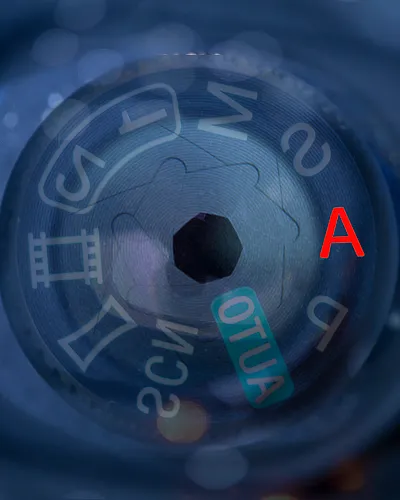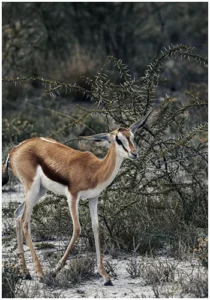
Photography as a Hobby for Beginners: Unlock Your Artistic Vision
Photography can be a fulfilling and enjoyable hobby that brings a creative outlet to your


What is Aperture in photography? Well! Aperture is a mechanism in the lens that controls how much light gets through to the camera sensor. It can be opened, stopped down and manually controlled on your camera. Think of Aperture as the pupil of your eye.
Aperture affects the depth of field and the exposure of the photo. A wider aperture lets in more light while a narrower aperture allows less light. You also control the depth of field with aperture; a wide opening (F2.8) gives you a shallow depth of field while a narrow aperture (F22) increases the depth of field.
When shooting in manual mode, adjusting the aperture is one way to change the exposure levels for your photo. Adjusting the aperture can help ensure that every photo you take is sharp and in focus.
Aperture is one of three essential elements in photography, along with shutter speed and ISO. It’s an adjustable diaphragm in the lens controlling the light in to the camera. Aperture size is measured in f-stops, and it affects two things: depth of field, and exposure.
The area of a photograph that appears crisp and in focus is known as the depth of field. Every image contains a focal point (where you actually focus your lens). However, there is also a region that appears sharp both in front of and behind your point of focus, and that region relates to the depth of field.
The smaller the aperture (higher f-stop number), the more everything will be in focus. This can be great for landscapes or group photos where you want to make sure everyone is sharp. Not normally used for portraits or close-ups. Here you’ll want a shallow depth of field, whereas your subject will be in focus with a blurred background.
Exposure refers to how much light enters your camera sensor. The bigger the aperture (lower f-stop number), the more light comes through, which can be helpful when shooting indoors or at night.
Camera shake can happen when hand holding the camera. The longer the shutter stays open, the more chance for motion blur. If you have a small aperture opening (high f-stop number), camera shake will be more pronounced. Therefore, you often see photographers using a tripod in low-light situations. It’s helps when keeping the shutter open for a longer period and reduces the chances of camera shake.
When you change your aperture, it influences the exposure of your image. The aperture is the opening in your camera that allows light to enter, and it can be changed to affect exposure by either a wide or small aperture. Each setting also influences other image properties, such as depth of field.
If you have a large aperture (F2.8), more light will enter the camera, a small aperture (F22), will let in less light. This also means that less of your photo will be in focus (depth of field) and that any movement in your photograph will be blurred.
We all agree that there are three elements that control how your photos will look: aperture, shutter speed, and ISO. Aperture is the opening in your lens that lets light through to the camera sensor. It’s measured in f-stops and controls how much of the scene will be in focus (depth of field).
A shallow depth of field keeps foreground subjects in focus while a deep depth of field focuses on both foreground and background objects. Remember – aperture size is measured in f-stops and determines depth of field (DOF)
A wide open aperture (low number like f/2.8) gives you a shallow DOF while a small aperture (high number like f/22) gives you a deep DOF. Portraits 2.8, shallow depth of Field, landscape F/22 deep depth of field.
Aperture is expressed in F-stops or F-Numbers, indicating the size of the hole in the lens’s diaphragm.
Think of an aperture of F/10 would be 1/10 (one-tenth) of the opening of the lens’ diaphragm. The equivalent of 1/4 is an aperture of F/4. F/16 is 1/16. (one-sixteenth). so on.
The “F” in aperture settings is simply shorthand for focal length. When you see an “F” followed by a number, such as F/8, it means that you are looking at the size of the aperture relative to the focal length.
Aperture is one of the most crucial items to comprehend in photography.. In fact, it’s such an important concept that many beginner photographers find it confusing. Aperture works in reverse from what we’re used to: small numbers represent large apertures, and large numbers represent small apertures.
Confused? For new photographers, this goes against our natural instincts. When we hear “small number,” we think “small” not “large.” But remember, in photography terms, small numbers mean large apertures and vice versa.
The number of blades in a lens also determines how much light passes through. More blades, the rounder the hole, the more light. Therefore, lenses with 7 or 8 blades tend to produce nicer-looking bokeh (the out-of-focus areas of an image).
Maximum aperture is the size of the hole that lets light through when the lens is open all the way. Lenses with a large maximum aperture are called “fast” lenses because they let more light into the camera and allow you to use a faster shutter speed. Usually, a 2.8 or less is known as a fast lens.
Lenses with a small maximum aperture are called “slow” lenses because they let less light into the camera and require a slower shutter speed for correct exposure.
Prime lenses normally have larger maximum apertures than zoom lenses. Plus are less expensive, the drawback is you have to zoom with your feet.
Aside from exposure and depth of field, aperture sometimes can impact sharpness in photography.
Be cautious when shooting with extreme aperture values (F2.8, F1.4). When the diaphragm is wide open, gathering as much light as possible, your lens can’t provide the clearest results.
You’ll be able to see how your image loses clarity when you open your aperture below f/5.6 settings. This is different for each lens, so you will need to test this on your own.
When you set the aperture to a small value, diffraction can appear. This is an optical phenomenon that can be seen as you close the aperture. The smaller the aperture, the more pronounced this effect will be.
An optical interference called lens diffraction occurs when light enters a small opening, such as a low-f-number aperture. When the wavelength of light and the orifice are about the same size, lens diffraction occurs.
Every lens has a limited aperture, hence diffraction happens when light travels through an aperture of any size. The resultant diffraction pattern is known as the Airy disc and has a bright spot in the centre surrounded by concentric rings of diminishing intensity. Since the Airy disc is the smallest point to which a beam of light may be focused, the diameter of this pattern is proportional to the wavelength of the illuminating light and the size of the circular aperture.
Getting to the technical? Ya, for me to, for more information, check out Edmonds optics. Just remember diffraction can occur and you have no control over it.
There is no rule of thumb to know which aperture is the sharpest in a lens. The sweet spot for aperture (sharpness) is between f/8 and f/11 (normally), or approximately two-three F-stop values from the maximum aperture value. This may vary depending on the lens you are using and the shooting conditions.
You can test your lens by shooting the same scene using different aperture values and zooming in to see which aperture produces the sharpest results. If you are not happy with the results, you can use imaging software like Topaz Sharpen AI to improve the sharpness of images that were taken with extreme apertures.
Some photographers use aperture priority mode, it’s easy and they don’t have to worry about shutter speed. Landscape and nature photographers, for instance. In this mode, you set the aperture and the camera automatically sets the shutter speed based on what it thinks is appropriate for that scene.
However, sometimes you might want more control over your shutter speed or use a different setting altogether. This is where manual mode comes in handy! With manual mode, you can choose whatever shutter speed and aperture, ISO combination you want, giving you a lot more flexibility in terms of creative expression.
Aperture is a hole in the lens that controls the amount of light that enters your camera. It also influences depth of field, which is the sharpness or blurriness of a photograph.
What is Better higher or Lower Aperture? It depends on your goals! If you want a photo with blurry backgrounds, go for a low aperture; if you’re looking for more clarity and detail in your photos, use a higher aperture instead.
No element in a picture should be distracting or out of place if it is to be considered a work of perfect unity or harmony.
When you’re taking a photograph, aperture is one of the most important settings to consider. It affects the distance between objects in your photograph and how much detail is visible. You can use it to create shallow depth of field or achieve a wide depth of field. To choose the right aperture, you need to know two things: your scene’s focal length and height. Focal length is the distance from the lens to the point of focus in your photo, and height is how tall your scene is. Once you have those numbers, use this formula

Photography can be a fulfilling and enjoyable hobby that brings a creative outlet to your

Welcome to our guide to Photoshop tutorials for beginners: A Complete Beginner’s Tutorial for Learning

Creating stunning images is all about nailing the perfect colour grade. It’s what makes your